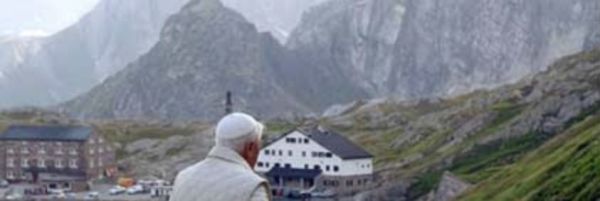Liturgy is dominated by the episode of the Transfiguration which in Luke's Gospel immediately follows the Teacher's invitation: "If any man would come after me, let him deny himself and take up his cross daily and follow me" (Lk 9: 23). This extraordinary event is an encouragement in the following of Christ.
Luke does not speak of the Transfiguration but describes what happens through two elements: the Face of Jesus which changes and his clothes that become a dazzling white in the presence of Moses and Elijah, a symbol of the Law and of the Prophets. The three disciples who witness the scene are heavy with sleep: this is the attitude of those who, although they have seen divine miracles, fail to understand. It is only the struggle against drowsiness that enables Peter, James and John to "see" Jesus in his glory. Then the rhythm quickens: while Moses and Elijah take their leave of the Master, Peter speaks and as he speaks a cloud envelops him and the other disciples in its shadow. This cloud, while it covers them, reveals the glory of God, just as happened for the pilgrim people in the desert. Their eyes can no longer see but their ears can hear the voice that comes out of the cloud: "This is my Son, my Chosen; listen to him!" (v. 35).
The disciples no longer have before them a transfigured face or dazzling garments or a cloud that reveals the divine presence. They have before them "Jesus... alone" (v. 36). Jesus is alone with his Father while he prays but at the same time, "Jesus... alone" is all that the disciples and the Church of every epoch have been granted; and this must suffice on the journey. The only voice to listen to, the only voice to follow is his, the voice of the One going up to Jerusalem who was one day to give his life to "change our lowly body to be like his glorious body" (Phil 3: 21).
"Master, it is well that we are here" (Lk 9: 33) are Peter's ecstatic words, that often resemble our own desire before the Lord's consolations. However the Transfiguration reminds us that the joys sown by God in life are not finishing lines; rather they are lights he gives us during our earthly pilgrimage in order that "Jesus alone" may be our Law and his word the criterion that directs our existence.
[Pope Benedict, Angelus, 28 February 2010]












